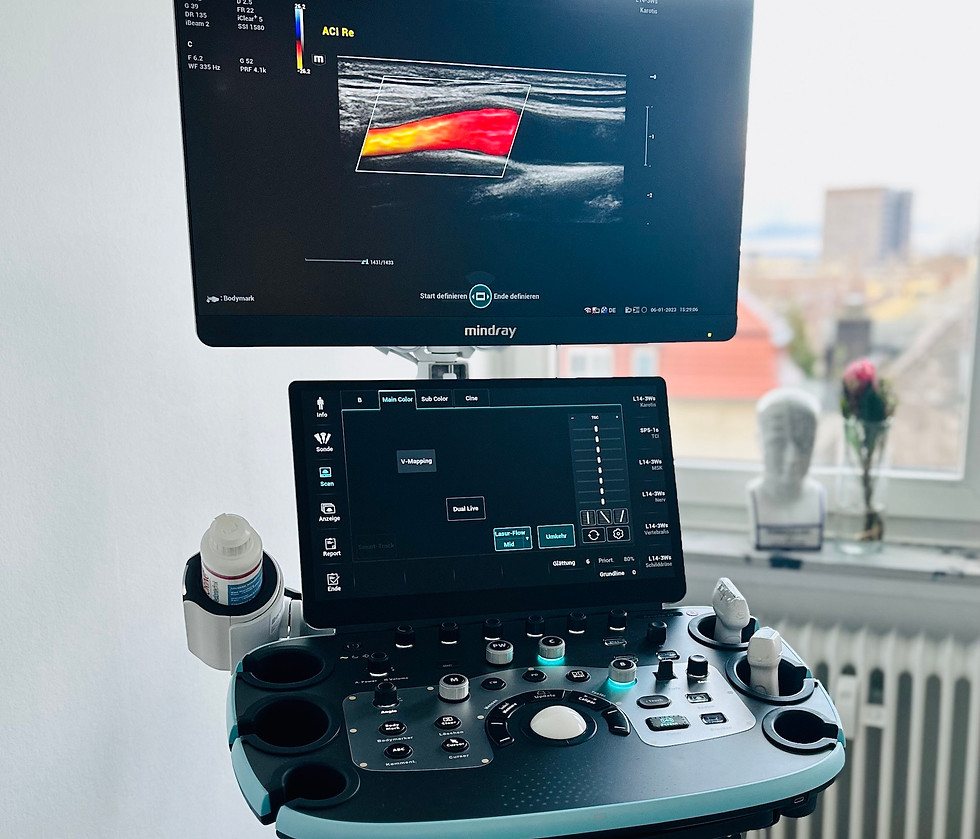Services
Ultrasound diagnostics
Sonography, also known as ultrasonography, is a non-invasive diagnostic method used to evaluate the internal organs and tissues in the body. Sonography uses high-frequency sound waves that are sent through body tissues and then reflected off the organs and tissues to create an image of structure and function.
The history of sonography dates back to the 1940s when researchers began using sound waves to diagnose conditions such as gallstones and tumors. In the 1950s, the first ultrasound machines were developed, allowing doctors to aim the sound waves at the organs to be examined and display the reflected signals on a screen.
Neurological sonography for examining the extracranial and intracranial arteries supplying the brain has established itself in recent decades as a valuable method for diagnosing circulatory disorders and other diseases of the brain. The exam is usually done by applying ultrasound gel to the patient's head or neck area and attaching an ultrasound probe that emits sound waves and records the reflected signals.
The examination of the extracranial arteries supplying the brain is performed by placing the ultrasound probe on the side of the neck above the carotid artery, called the carotid, to measure blood flow in the arteries.
The intracranial examination is performed by placing the ultrasound probe on the top of the skull in the temporal and occipital area to measure blood flow in the arteries in the brain.
Neurological sonography is an important method for diagnosing circulatory disorders in the brain, such as those associated with strokes. It can also be used to monitor changes in blood flow and to evaluate the effectiveness of treatments.
In recent years, advances in sonography technology have resulted in higher imaging resolution and sensitivity. This has contributed to sonography being widely used and recognized as an important method for diagnosing and monitoring neurological disorders.
In summary, sonography is an important diagnostic method in medicine used to examine organs and tissues in the body. Neurological sonography for examining the extracranial and intracranial arteries supplying the brain has established itself as a valuable method for diagnosing circulatory disorders, the risk of stroke and other diseases of the brain.
Gallery

Mindray - Resona i9

Mindray - Resona i9

Mindray - Resona i9

Our logo
